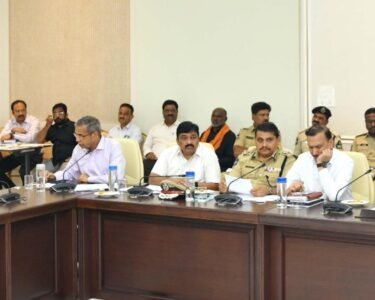In a significant move to address Bengaluru’s notorious traffic congestion, the Bengaluru City Traffic Police (BTP) have launched a new initiative called ‘Cobra Beat’, aimed at tackling micro-level traffic bottlenecks across the city. The innovative patrol-based system seeks to enhance on-ground responsiveness, reduce localised jams, and improve the overall flow of vehicles in India’s tech capital.
Unveiling the initiative, Joint Commissioner of Police (Traffic) M. N. Anucheth stated that ‘Cobra Beat’ is designed to “bring agility and real-time problem-solving into traffic management.” The name ‘Cobra’ symbolizes speed, precision, and alertness, traits the police force hopes to replicate in urban traffic operations.
Understanding the ‘Cobra Beat’ Concept
Unlike conventional traffic deployment, where officers are stationed at fixed junctions, the Cobra Beat system assigns dedicated teams to specific high-density zones. These teams continuously patrol short stretches, identify choke points, and take immediate corrective measures — such as clearing wrongly parked vehicles, managing signal timing issues, and ensuring smooth pedestrian movement.
Each Cobra team is equipped with motorbikes, communication devices, body cameras, and real-time access to traffic control room data. This setup allows them to respond swiftly to emerging congestion without waiting for higher-level instructions.
“The idea is to decentralize traffic management. Instead of reacting after a jam has already built up, the Cobra Beat teams act at the micro level to prevent it altogether,” said Anucheth.
Targeting City’s Most Congested Corridors
Initially, the Cobra Beat system has been deployed in traffic-heavy zones such as Outer Ring Road, Whitefield, Silk Board Junction, Koramangala, MG Road, Hebbal, and Peenya Industrial Area. These areas witness daily gridlocks due to a mix of IT commuters, construction works, and narrow bottlenecks.
According to officials, each Cobra team will cover a radius of 1–2 km and operate during peak hours — from 7:30 a.m. to 11 a.m. and 4:30 p.m. to 9 p.m. “The micro-level coverage allows officers to spot small disruptions that often snowball into major jams — such as broken-down vehicles, encroachments, or unregulated U-turns,” explained DCP (Traffic-East) Shantharaju.
Technology-Driven Monitoring and Coordination
The initiative is supported by Bengaluru’s Integrated Traffic Management System (ITMS) and Command and Control Centre, which track vehicle density, signal patterns, and CCTV feeds across 10,000 junctions. Cobra teams will receive alerts from the control room about sudden traffic build-ups, enabling them to intervene immediately.
“The command centre acts as the brain, and the Cobra teams act as the limbs. This coordination ensures fast, precise responses,” said Anucheth. The system also allows officers to report real-time updates and upload images of cleared congestion zones, ensuring accountability and performance tracking.
Officials added that AI-based traffic flow analysis tools will soon be integrated to help identify recurring choke points and suggest preventive measures.
Improving Public Experience and Safety
Traffic officials emphasized that the primary goal of the Cobra Beat is not just congestion control, but also public convenience and road safety. The city’s growing number of two-wheelers and ride-hailing vehicles often contribute to unpredictable traffic behavior, creating chaos in narrow lanes.
“The Cobra Beat teams will act as mobile enforcement and assistance units. They will help manage school zones, hospital routes, and bus corridors where pedestrians face daily challenges,” said Anucheth.
Additionally, the police plan to train Cobra Beat officers in first response and basic medical aid, ensuring they can assist accident victims before ambulances arrive.
Citizen Feedback and Collaboration
In a citizen-centric move, the BTP will invite public feedback through the ‘BTP Traffic Sahay’ app and social media platforms. Residents can report recurring local jams, encroachments, or illegal parking directly to the Cobra Beat teams operating in their area.
“We want this to be a participatory effort. The success of Cobra Beat depends on cooperation between the public, local businesses, and enforcement authorities,” said Additional Commissioner of Police (Traffic) S. D. Sharanappa.
He added that local residents’ welfare associations and IT park management teams have been asked to nominate volunteer traffic wardens to coordinate with the Cobra teams during peak hours.
Early Results Show Positive Impact
Within the first week of pilot implementation, the traffic police reported a 10–15% improvement in vehicle movement time in several critical corridors. Officers also managed to remove over 200 encroaching vehicles and clear multiple unauthorized parking spots that caused repeated slowdowns.
Commuters have responded positively on social media, with many praising the increased visibility and proactiveness of traffic police. “I saw the Cobra team clearing a stalled auto within minutes near Silk Board. This kind of quick action makes a real difference,” said Rajesh Nair, a software professional from HSR Layout.
Challenges and Future Expansion Plans
Despite the positive start, officials admit that manpower and resource allocation remain major challenges. Bengaluru currently has over 65 lakh registered vehicles and only around 3,000 traffic personnel, making consistent on-ground enforcement difficult.
To overcome this, the BTP plans to expand Cobra Beat units across all eight traffic divisions by the end of the year. Additional motorbikes, surveillance drones, and advanced communication systems will be procured under the Smart City and Urban Mobility initiatives.
“We will fine-tune the system based on feedback and data. The goal is to make Cobra Beat an integral part of Bengaluru’s traffic management model,” Anucheth affirmed.
Conclusion: A Step Toward Smarter Urban Mobility
The launch of the ‘Cobra Beat’ marks a major step toward modernizing Bengaluru’s traffic management. By focusing on micro-level intervention, data-driven coordination, and citizen participation, the Bengaluru Traffic Police are reimagining how urban congestion can be managed in a fast-growing metropolis.
If sustained effectively, the initiative could set a benchmark for other Indian cities grappling with similar traffic nightmares — proving that agility, technology, and teamwork can go a long way in taming the urban gridlock.







